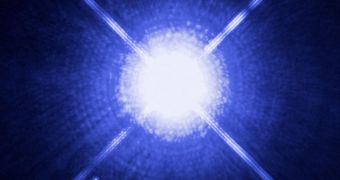A new investigation has demonstrated that astronomers and astrophysicists are missing numerous novae events, sometimes even if they are of very high magnitude. Observing more of these events could yield more insight into how they take place, and why.
The conclusions belongs to a research conducted by Liverpool John Moores University (LJMU) Astrophysics Research Institute PhD student Rebekah Hounsell.
She collaborated with colleagues from the University of California in San Diego (UCSD) and the San Diego State University (SDSU) for this investigation, SpaceRef reports.
The new research stems from a US spacecraft program. SDSU novae expert Allen Shafter and Hounsell found out that the spacecraft was detecting numerous stellar explosions of this type, and alerted experts to this phenomenon.
Since then, their announcements have informed numerous astronomy teams, which have caught significant numbers of novae as they happened, helping to further this field of research considerably.
“Even today 'new stars' (novae) are mainly discovered by amateur astronomers around the world who then alert their professional counterparts to conduct observations across the electromagnetic spectrum in an attempt to understand more about these stellar explosions,” the PhD student explains.
In her project, Hounsell used data collected by the Coriolis satellite. The spacecraft carries with in the Solar Mass Ejection Imager (SMEI) instrument, which was developed by experts at UCSD and the Birmingham University, in the UK.
The reason why SMEI is so efficient at what it does is that it conducts a full sweep of the sky once every 102 minutes, as it orbits our planet. Due to this ability, it managed to keep track of the waxing and waning of several novae events.
In addition, the instrument managed to observe in unprecedented levels of details stages of nova evolution that had been poorly observed before, or that hadn't been fully understood before.
“So far this research has shown that some novae become so bright that they could have been easily detected with the naked eye by anyone looking in the right direction at the right time but are being missed, even in our age of sophisticated professional observatories,” the student adds.
“The data have in fact opened a new chapter in our observations and understanding of novae. Interestingly, one of the novae found in the SMEI data has been suggested to be representative of the type of object that may ultimately explode as a Type Ia supernova,” she says.
“These titanic explosions are so luminous that they can be seen over vast distances and are used as important distance indicators, allowing us to explore the content and evolution of the Universe as a whole,” Hounsell concludes.

 14 DAY TRIAL //
14 DAY TRIAL //